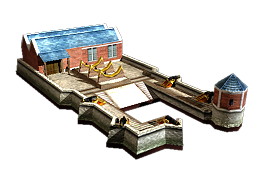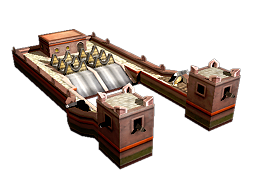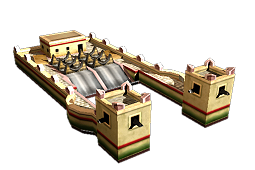Dockyard (ETW building)
| Dockyard | |||||||
|---|---|---|---|---|---|---|---|
| Category: | Port - Navy | ||||||
| Level: | 1 | ||||||
| Turns to build: | 3 | ||||||
| Building cost: | 2500 | ||||||
| |||||||
| Requires | |||||||
| Shipyard | |||||||
| Technology | |||||||
| Naval Shore Facilities | |||||||
| Enables | |||||||
| Drydock | |||||||
A dockyard can carry out major shipbuilding work, and usually includes a large number of associated artisans and tradesmen from coopers to victuallers.
Dockyards also have extensive shore facilities, such as ropewalks, forges, furnaces and, possibly most important of all, seasoning sheds. Using “green” timber for shipbuilding results in vessels that can “work” (have a little flexibility), something that French shipbuilders regard as a good thing, even though it means that their ships leak in heavy seas. Seasoning wood for months or years is prudent, and most other navies follow this practice.
On more than one occasion in the century Royal Navy raiding parties made a point of destroying stocks of timber – in particular masts – stored in enemy dockyards. The loss of timber stocks not only set back shipbuilding by many years, but also ensured that battle damage was hard to make good too. Burning timber rather than stealing it must have gone against the natural inclinations of many RN officers and seamen, as their prize money for the goods was also going up in smoke!




